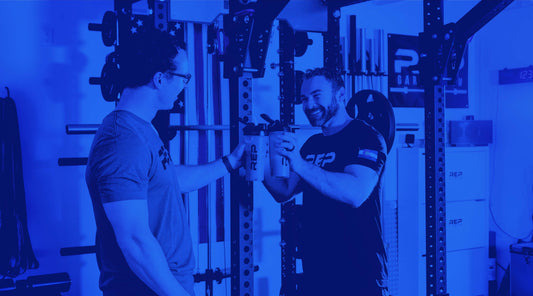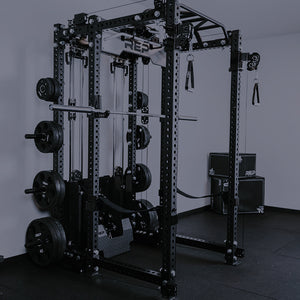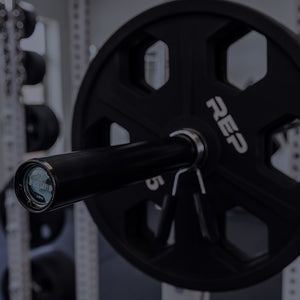
Do it for your knees.
Walking is an accessible form of cardio exercise that's been proven to boost your mood, help to manage weight, lower the risk of chronic diseases, strengthen your heart and body, and so much more. But what if you flipped it around and did it in reverse?
If you've spent any time on TikTok — maybe an ungodly amount — you've probably come across people walking backwards on treadmills, touting miraculous benefits. While backwards walking may feel a bit silly when not done in the comfort of your own home gym, there are some positive effects that may make this exercise worth your consideration.
Benefits of Walking Backwards
Here are worthwhile benefits from adding reverse walking to your fitness routine.
Knee Pain Relief
Ouch. Your knees hurt. Sometimes it's a recurring pain that you're all too familiar with, and other times it just pops up out of nowhere like an uninvited distant relative who plans on staying for the weekend.
When knee pain strikes, it's hard to do the activities you love. Walking forward, for example, places load on the knee as your heel strikes the ground and the force travels up your leg. This motion can put strain on structures like the ACL, meniscus, and kneecap.
Walking backwards can change that. Instead of landing heel-to-toe, you step toe-to-heel, which shifts how force moves through the knee. Rather than pulling the shin forward under the thigh, the thigh and shin press more evenly together. According to Jacob Steinberg, CTP, CSCS, FMS Level 1, "Quadriceps activation and calf and shin engagement can help to reduce compressing forces on the knee joint while simultaneous strengthening it — especially beneficial to those rehabbing ACL injuries."
Similarly, one study showed that backward walking generates less patellofemoral joint (where your kneecap and femur meet) compressive forces compared to forward walking.
That's why walking backward often feels less painful for people with irritated knees. Over time and with progressive overload, it can also strengthen the quadriceps and support knee health, potentially reducing pain from conditions like osteoarthritis, runner's knee, jumper's knee, and patellofemoral pain syndrome.
Elevated Calorie Burn
Walking backwards is a more challenging workout than walking forwards. Research has shown that in comparison, walking backwards can burn up to 40% more calories than forward walking.
Improved Gait and Balance
"Walking backwards can help to increase balance and proprioception since it requires more coordination and control of the core," says Steinberg.
Furthermore, after suffering a stroke, pateints are often taught to walk backwards to enhance their ability to walk forward. In one study, the inclusion of walking backwards for four weeks improved walking performance, speed, and cadence when compared to a control group.
Flexibility, Posture, and Range of Motion
Walking backwards requires mobility in your ankles and hamstrings, and over time it can help improve flexibility in those areas. Because you're landing on your toes and then rolling through the rest of your foot (as compared to forward walking which goes heel to toe), your calves and ankles go through a greater stretch, promoting a fuller range of motion.
"[It's] a good way to warmup for people who have likely been avoiding full range of motion at the knee for years," says Thomas Rush who holds a Master of Science in Coaching and Exercise Science and is a Certified Strength and Conditioning Specialist through the NSCA. "It helps get everything lubricated and warm around the knee joint to prepare for deep ranges of motion."
Additionally, compared to forward walking, your hips move through a slightly larger arc, which encourages better hip extension and balance between the front and back of the legs. Even your back benefits — the mechanics of backward walking naturally keep you from hunching over, supporting a more upright posture.
Mindfulness
Sure, taking a regular forward stroll can allow your mind to wander — what am I making for dinner? Did I thaw the chicken? Do I have chicken? DO I EVEN WANT CHICKEN? But walking backwards, a less familiar and less utilized movement, requires your attention and focus to keep you upright and moving. What that means is you'll need to be thoughtful of each step and present in the moment. This sort of mindfulness can enhance focus, reduce stress, and improve emotional well-being.
Walking Backwards Muscles Used
While forward and backward walking are similar motor behaviors, the two variations engage differing muscles to differing degrees. While the quadriceps are used in both forward and backward walking, studies have shown they're (especially the vastus medialis) used to a greater degree in backwards walking — helping to propel and stabilize your body with each step. Similarly, backwards walking recruits more engagement from the glutes and hip flexors when compared to forward walking.
How to Walk Backwards on Treadmill
Sure, you could walk backwards out in the real world, but you'll need to swivel your head frequently to avoid cars, curbs, fences, trees, trash cans, and aww, little presents from your neighbor's dog.
Noah Tenenbaum, a certified strength & conditioning specialist with a master’s degree in applied physiology and kinesiology, sees this as a limited way of training. "Walking backward has more of a quad bias, and can help work better knee extension," he says, "But for most, there's no reason to add it into training without an external load." Translation? For most trained people, there won't be benefits without enough stimulus. The fix? Add a weight vest and/or walk backwards on a treadmill where you can control your training intensity.
Motorized Treadmill Proper Form
As an alternative to walking backwards outside, pop into your local commercial gym or rev up the engine on your motorized treadmill to add incline training as a challenge. Here's how to tackle this exercise with perfect form:
How to Walk Backwards on a Motorized Treadmill:
- SAFETY: Attach the safety key to you to stop the treadmill belt should you take a tumble.
-
SPEED: Set your speed low to start, around 2- to 2.5 miles per hour.
- RAILS: Once you've started the belt, flip around carefully and grab hold of the rails.
- STEPS: Unlike your stride when walking forward, use smaller steps when walking backwards to help keep you balanced and in control.
- TIME: Start off with short durations and gradually increase your time as you become more comfortable. Beginners can start off with five minute efforts.
- INCLINE: To increase the challenge, up the incline. Start low until you get comfortable. Beginners may opt for as little as a 2% incline, while more advanced users can take their incline up to 10%.
Strive Series Manual Treadmill Correct Technique
When your backwards walk has plateued, or you're ready for a new variation, a manual treadmill may be the right stimulus to spice up your routine. A manual tread like the Strive Series Curved Treadmill allows you to adjust the deck angle and increase the resistance to tackle backwards walking. Plus, it's a great substitue for outdoor sled work.
Here's how to get your technique and setup dialed in when walking backwards on a manual tread.
How to Walk Backwards on the Strive Series Manual Treadmill
- SAFETY: Utilize the optional straps and belt to keep you secure while tackling backwards sled drags or walks.
- INCLINE: Adjust the deck between two incline settings — flat or incline — depending on your desired training intensity.
- SPEED: On manual or curved treadmills, your effort controls your speed. So work at the speed that's right for you.
- RESISTANCE: For more of a challenge, select your level of resistance. From lower resistance settings that mimic the feeling of an uphill walk up to the feeling of a weighted sled drag.
- RAILS: Hold onto the side rails to keep yourself steady while walking backwards.
- STEPS: Unlike your stride when walking forward, use smaller steps when walking backwards to help keep you balanced and in control.
- TIME: Start off with short durations and gradually increase your time as you become more comfortable. Beginners can start off with five minute efforts.
Takeaway
Walking is a proven way to stay active, and backward walking offers many of the same advantages — supporting beginners, athletes rehabbing knee injuries, older adults, and lifters seeking variety. Add a few minutes of backward walking on the treadmill at the start of your session to help ease knee pain, target your quads, boost calorie burn, improve posture, and more.
FAQs
Is walking backwards good for you?
Just like walking forwards, walking backwards is a great way to add some movement to your day. Additionally, walking backwards can help strengthen your quadriceps, promote greater flexibility, and take pressure off your knees, making it a great tool for those recovering from injury or with knee issues.
Does walking backwards help your knees?
It can! Walking backwards helps to strengthen your quads while also taking pressure off your knees due to the toe-to-heel movement pattern.
What does walking backwards do?
Walking backwards burns 40% more calories than walking forward, takes pressure off your knees, strengthens your quads, supports improved posture, and promotes minfulness as you focus on staying upright.
Rosie Borchert is NASM-CPT, former Nike Volleyball coach, and fitness writer whose work has appeared on BarBend and Tonal. If anyone would like to hire her to play beach volleyball, snowboard, binge watch TV, or go climbing, please get in touch.
This article was reviewed by Ashley Boyer, ACE-CPT, for accuracy.
similar to this

NEWSLETTER SIGNUP
Product launch information, promotions, blogs, and REP news.







